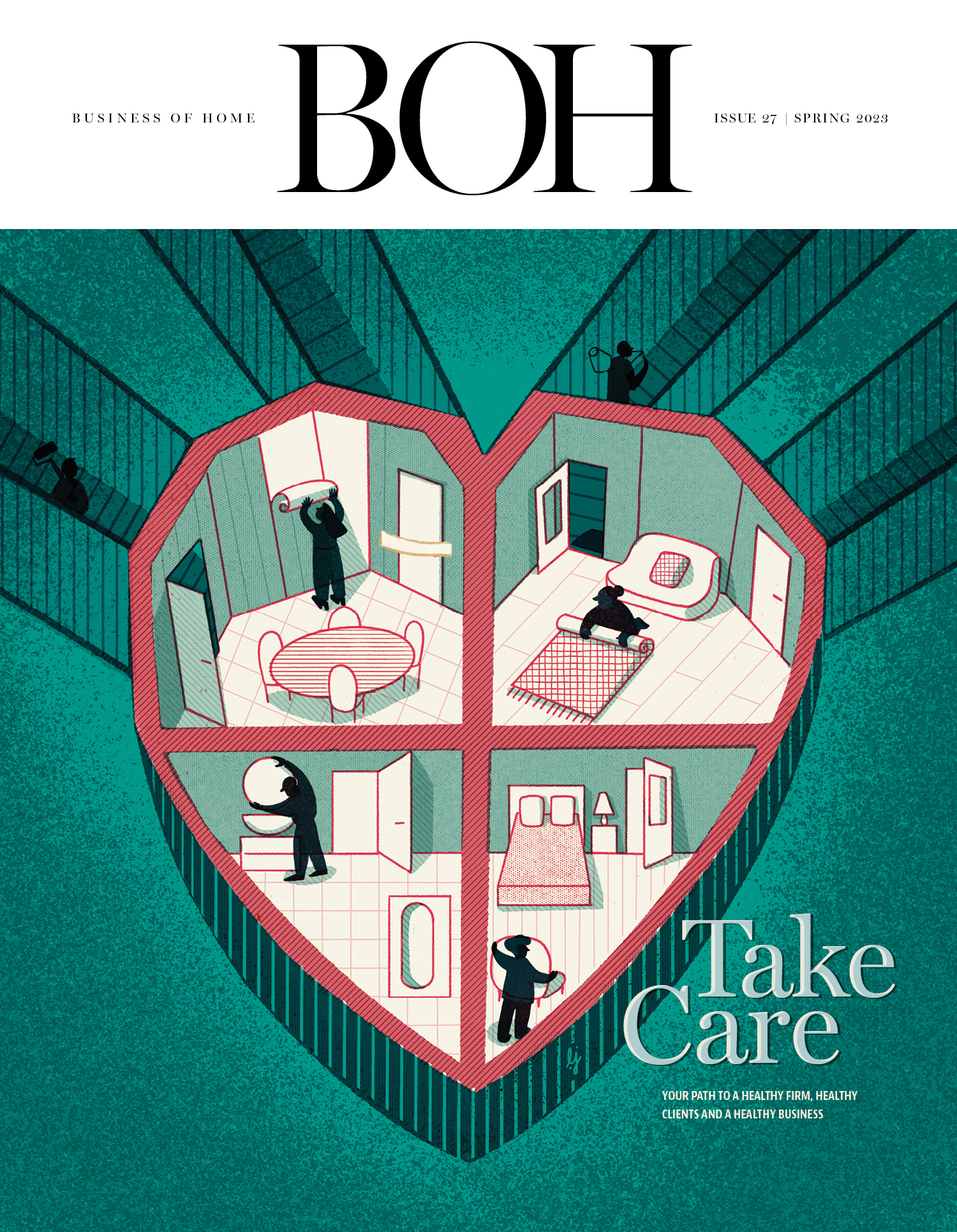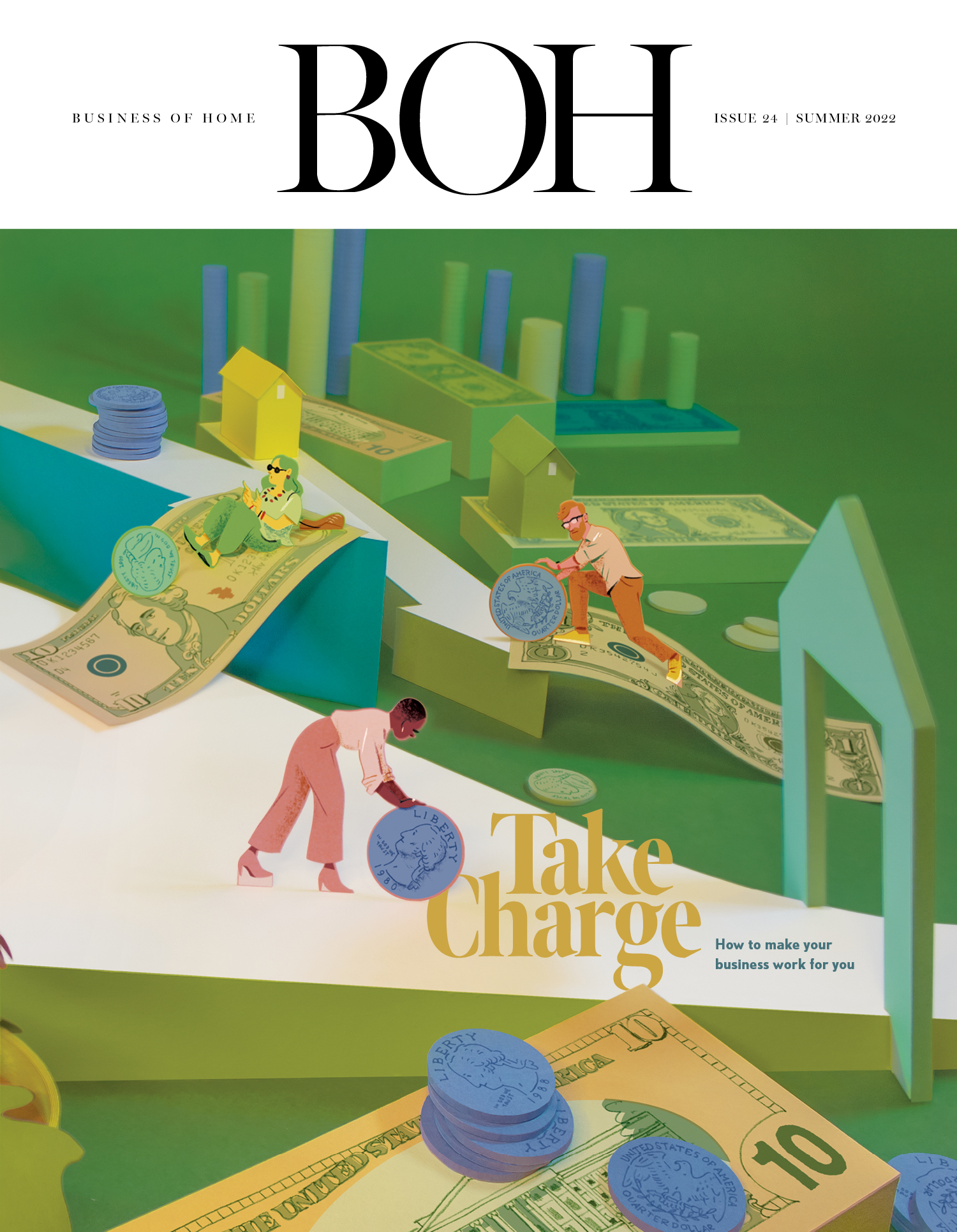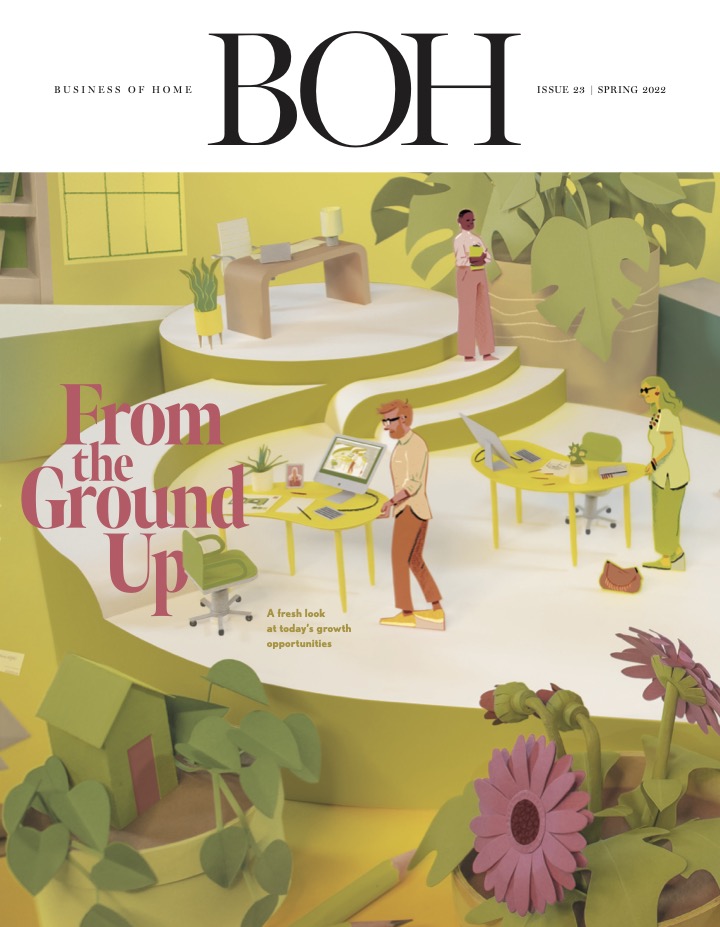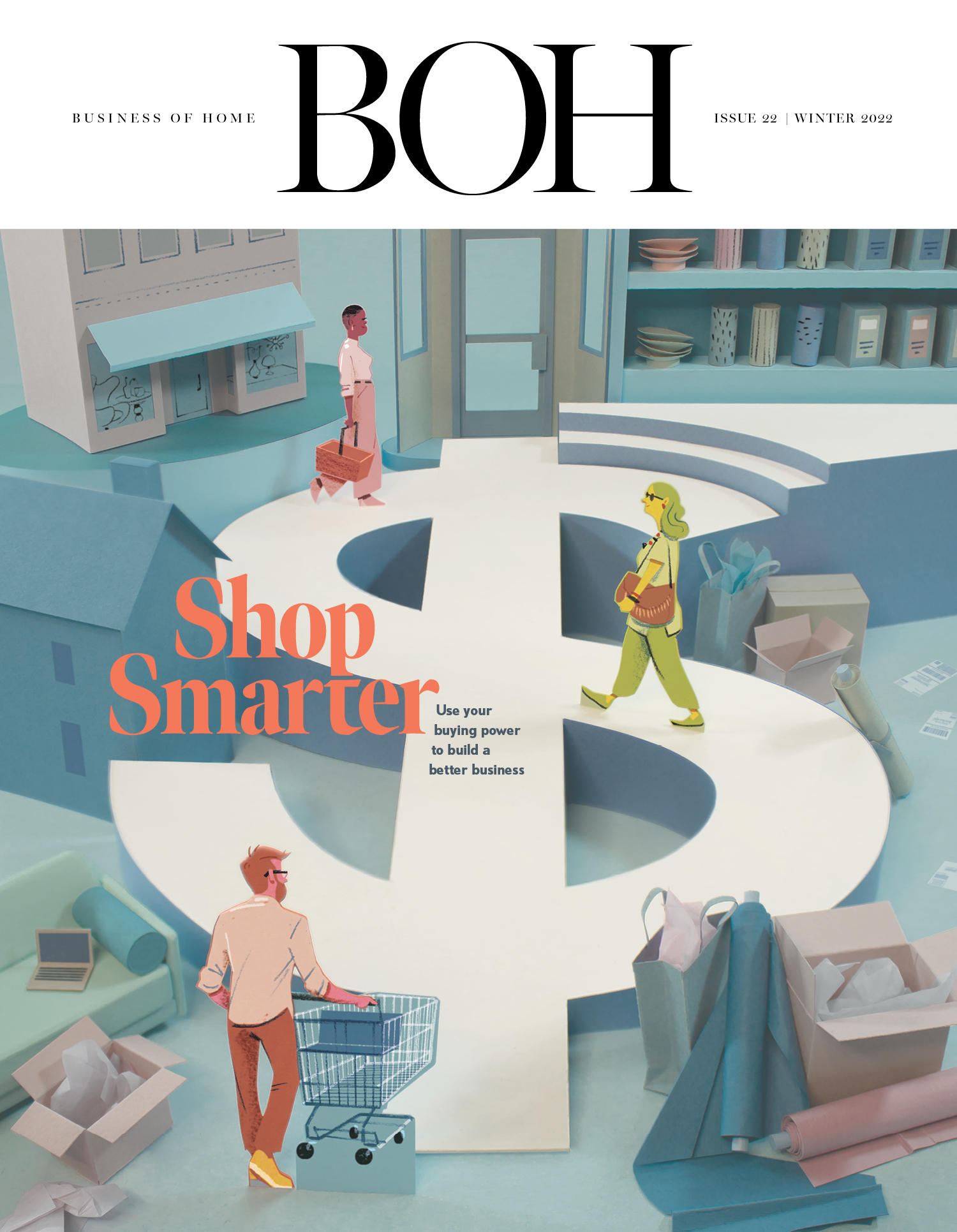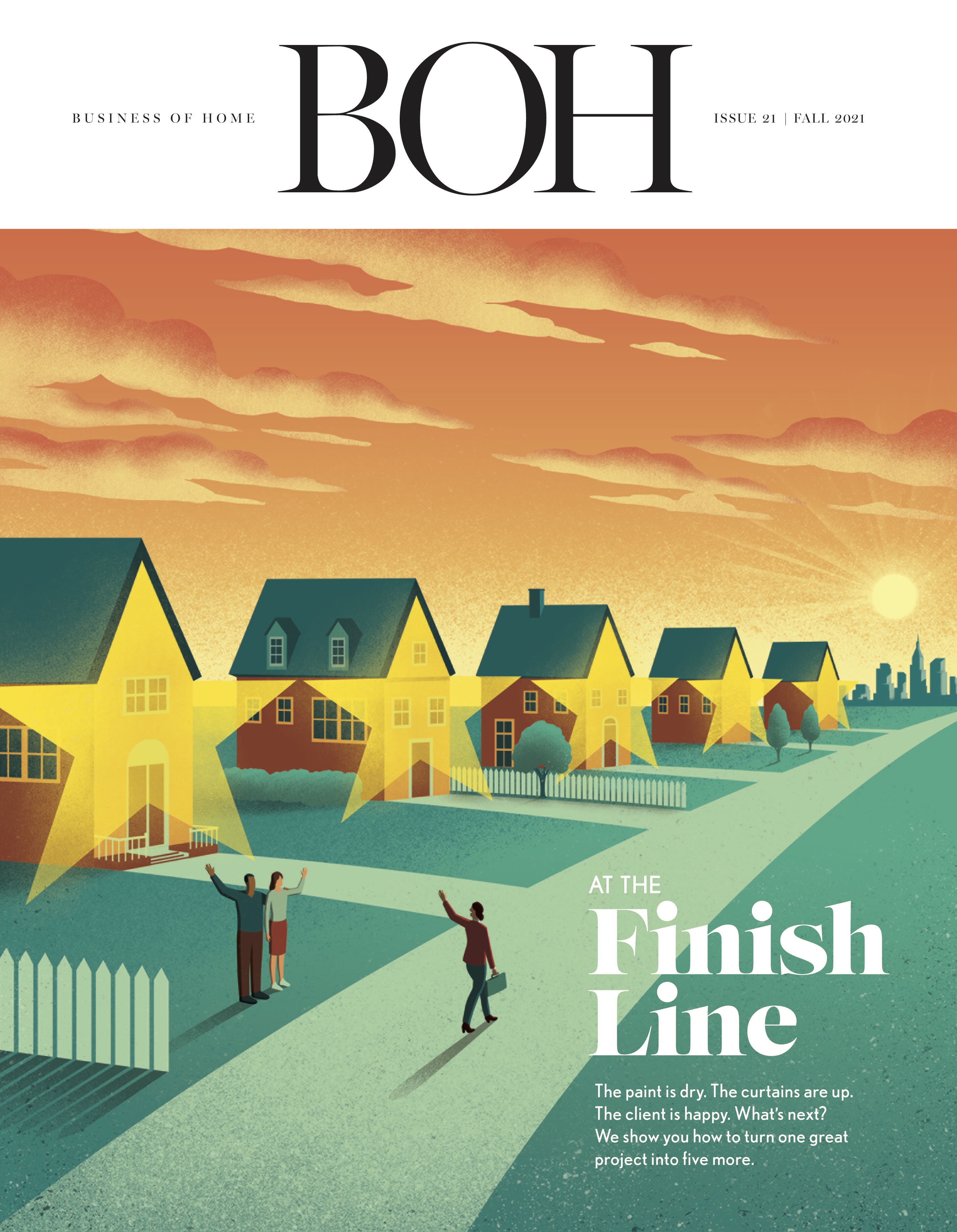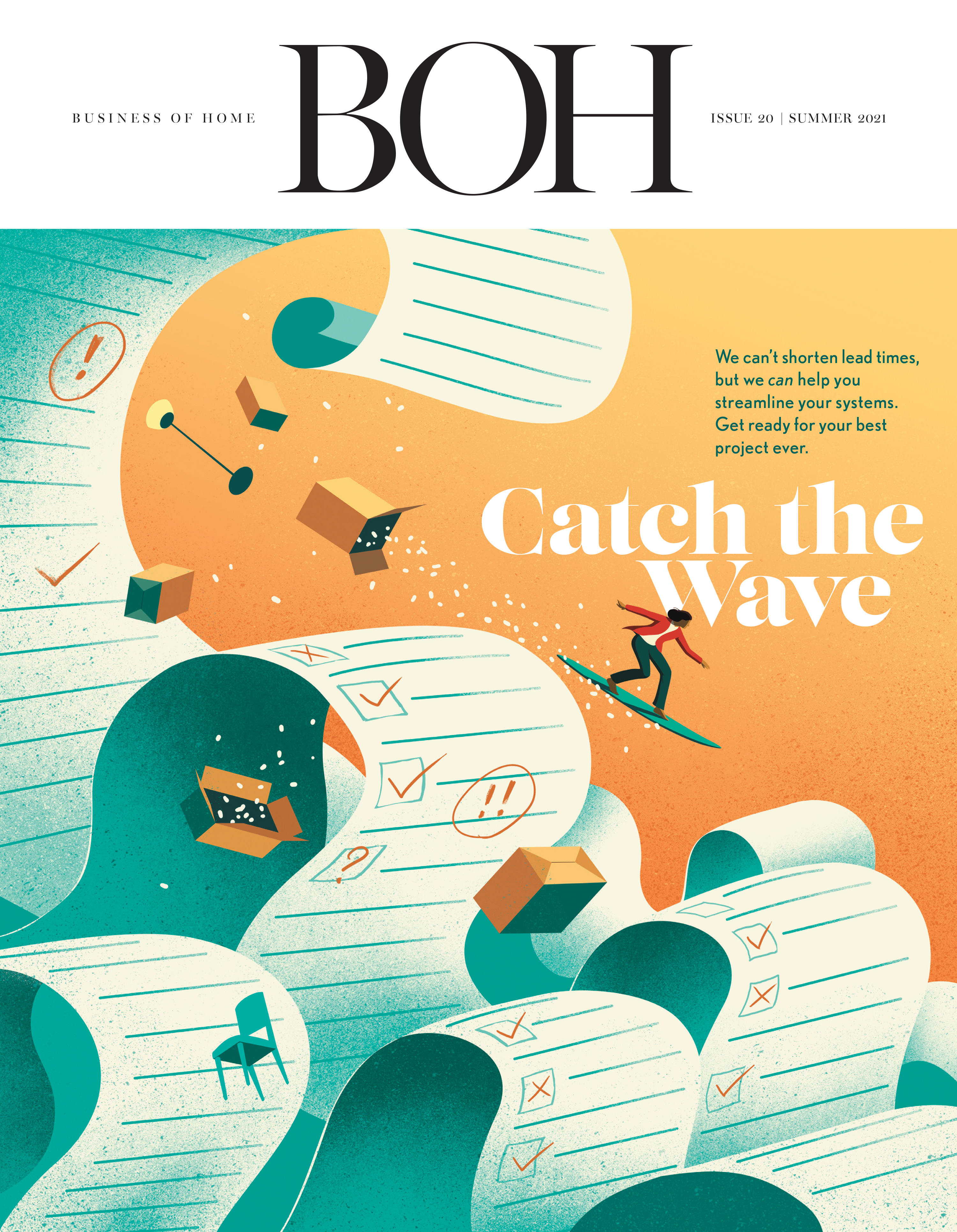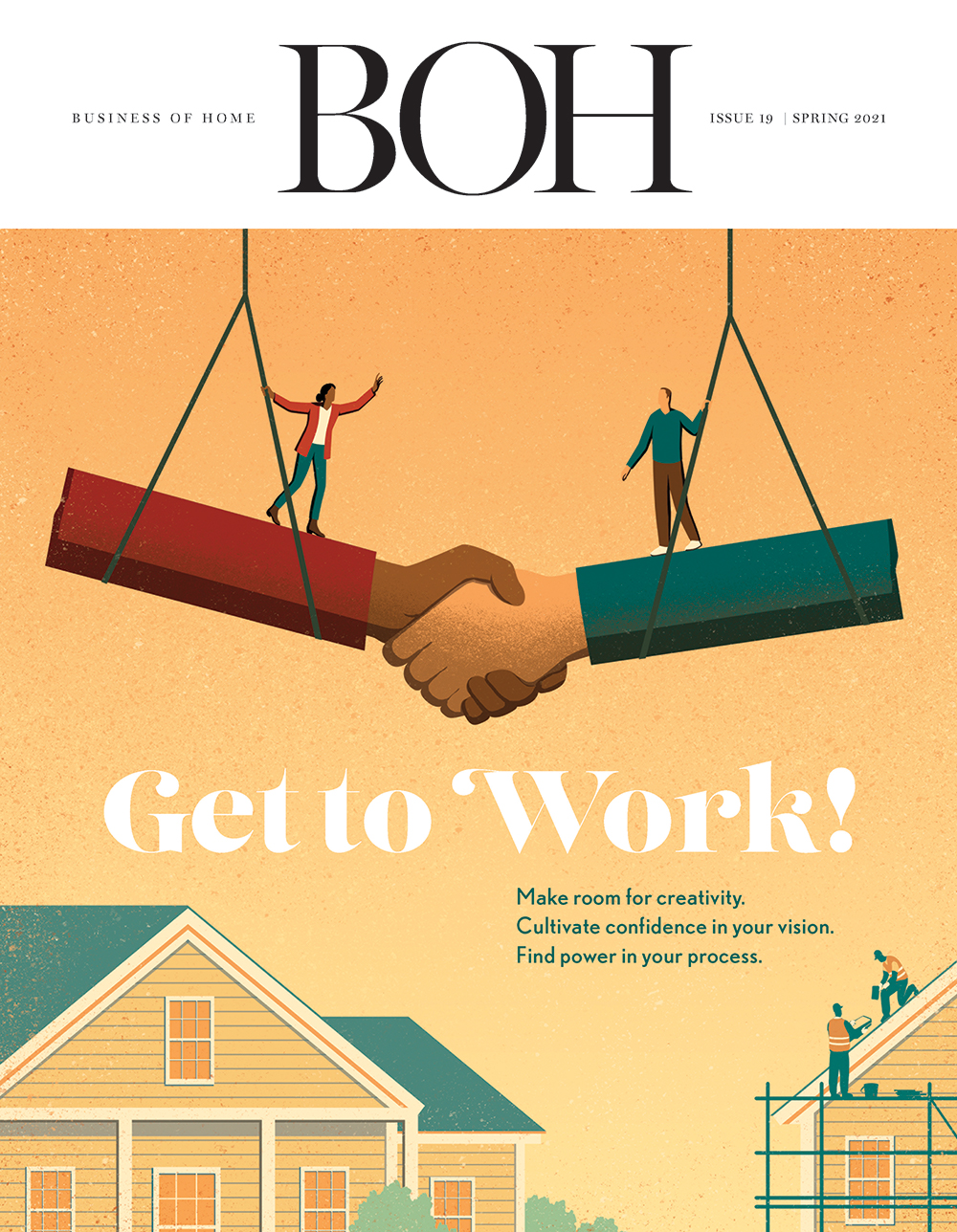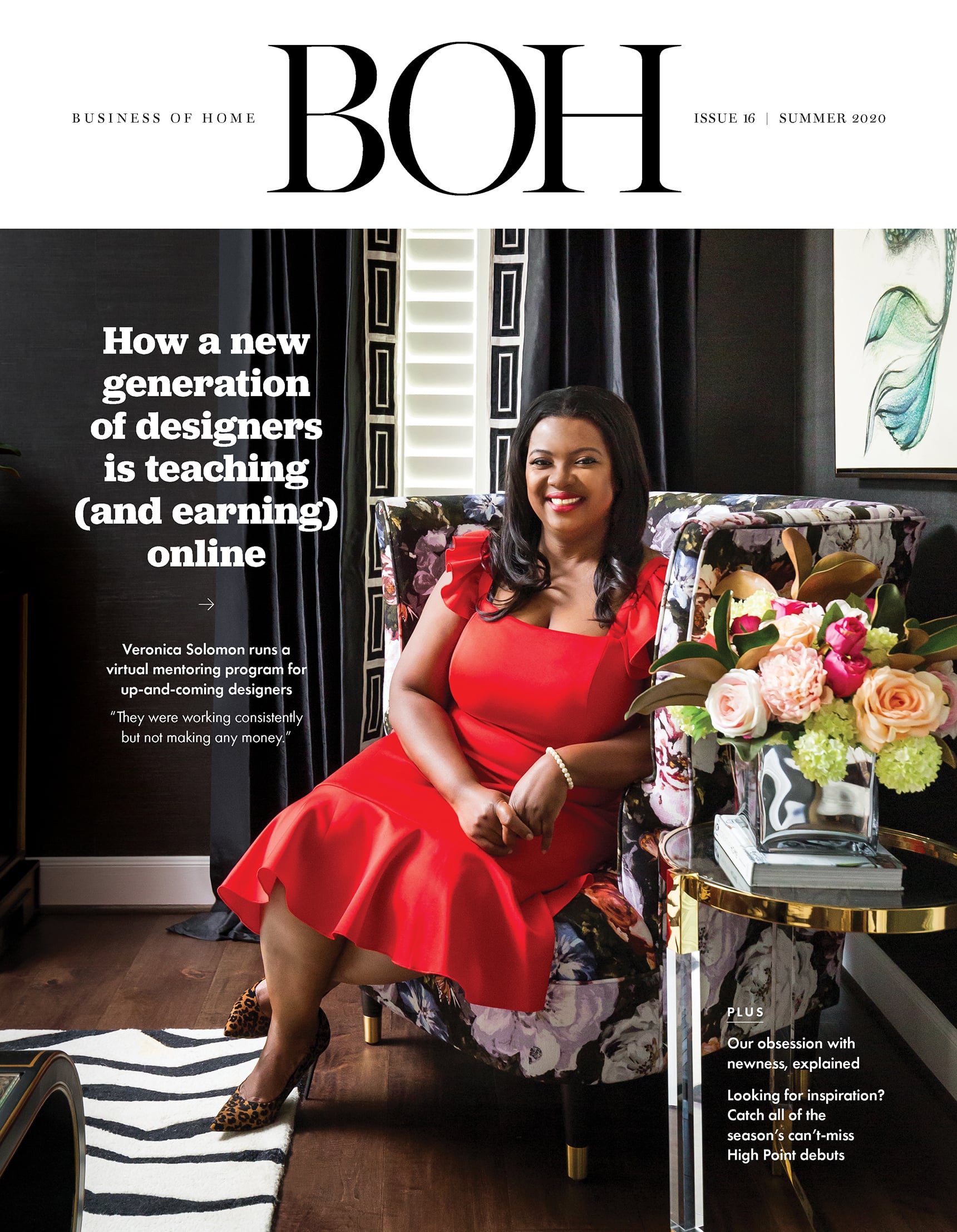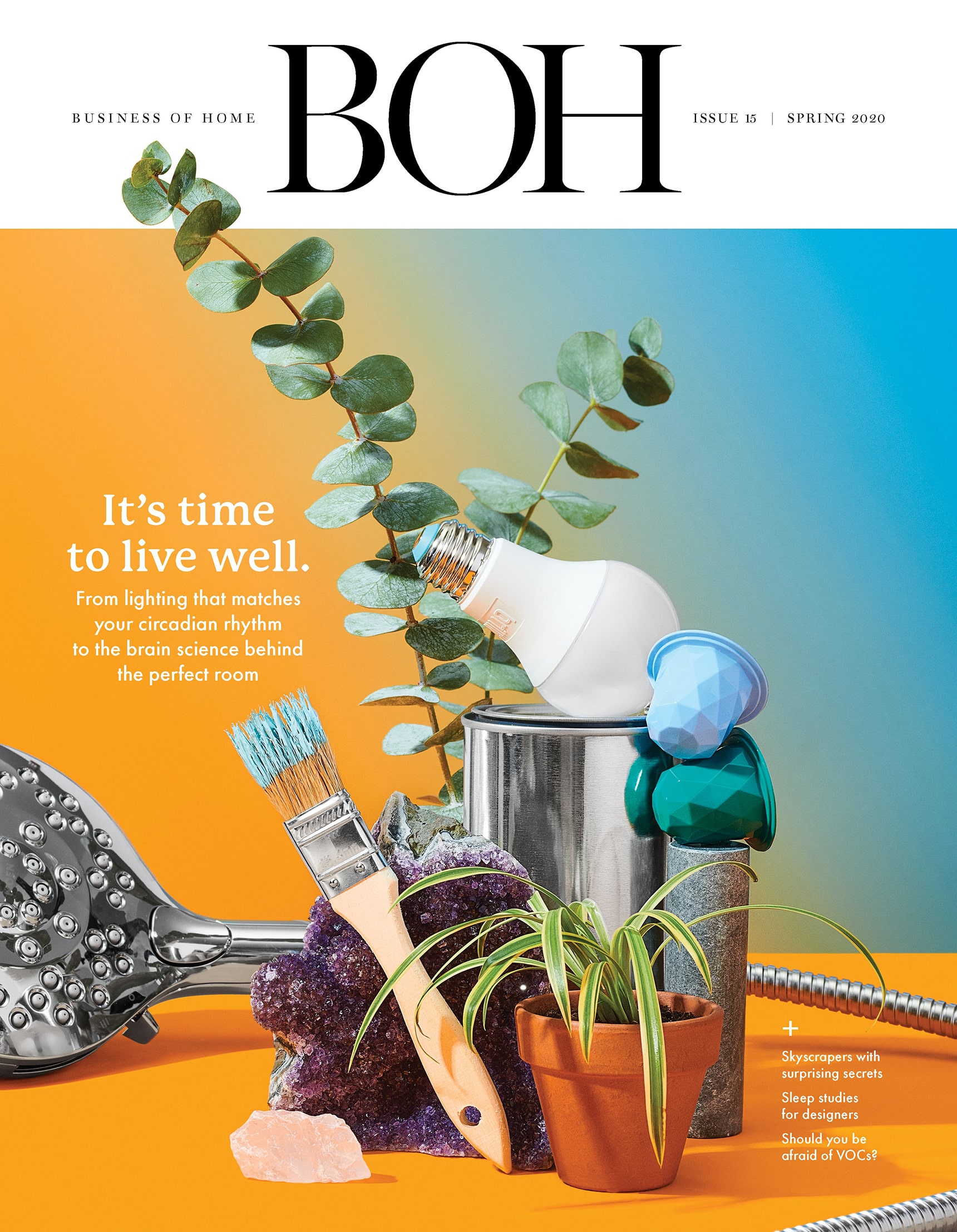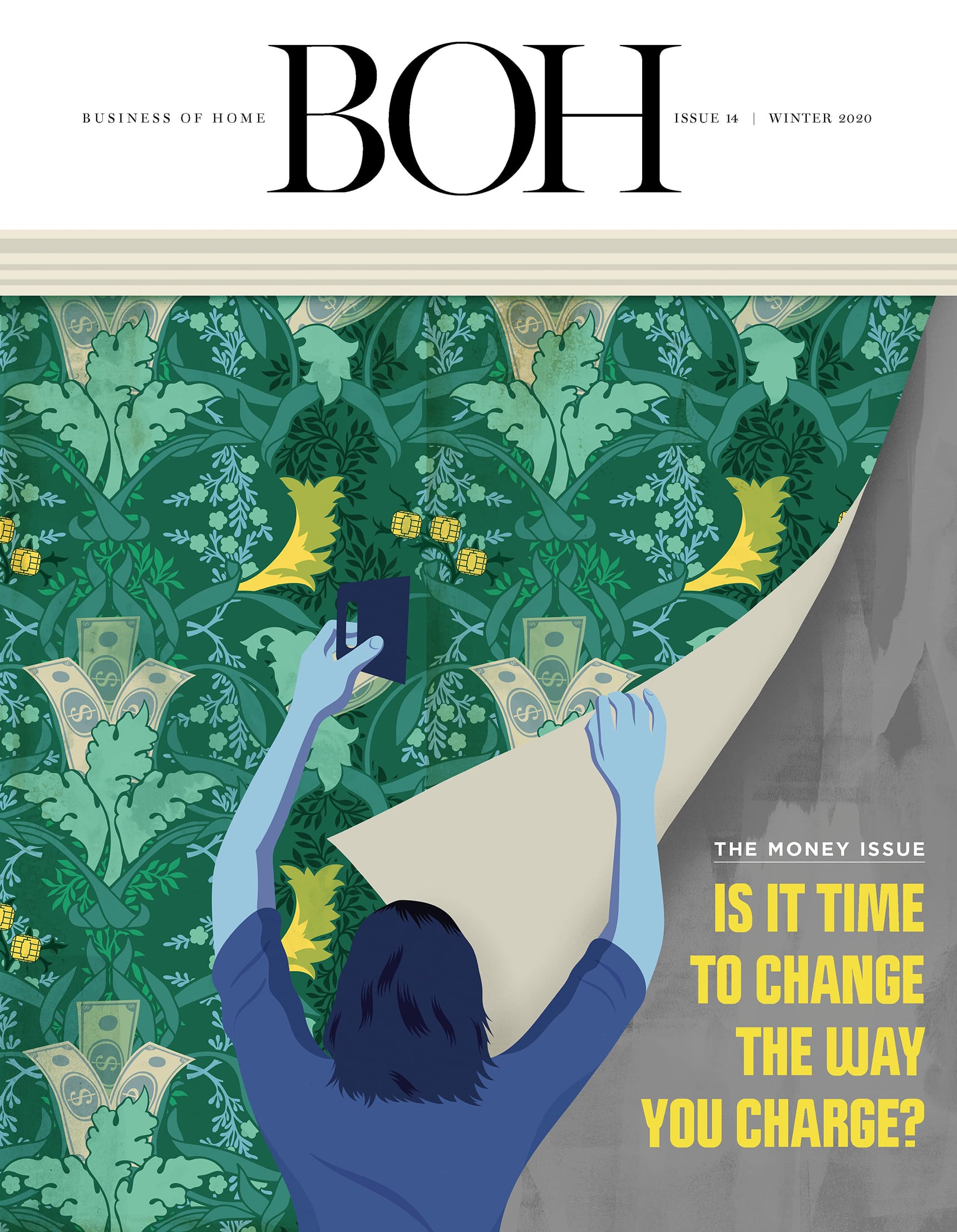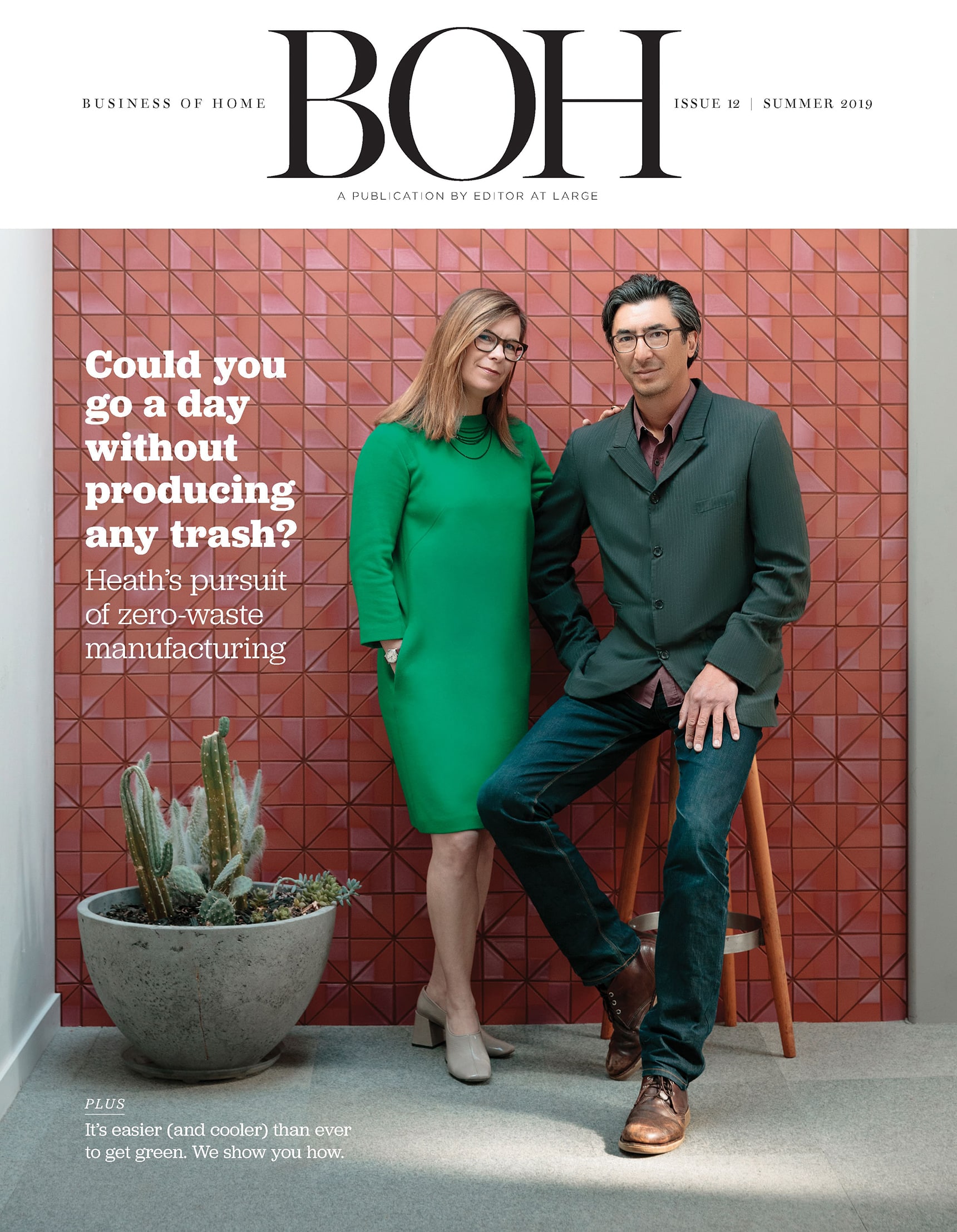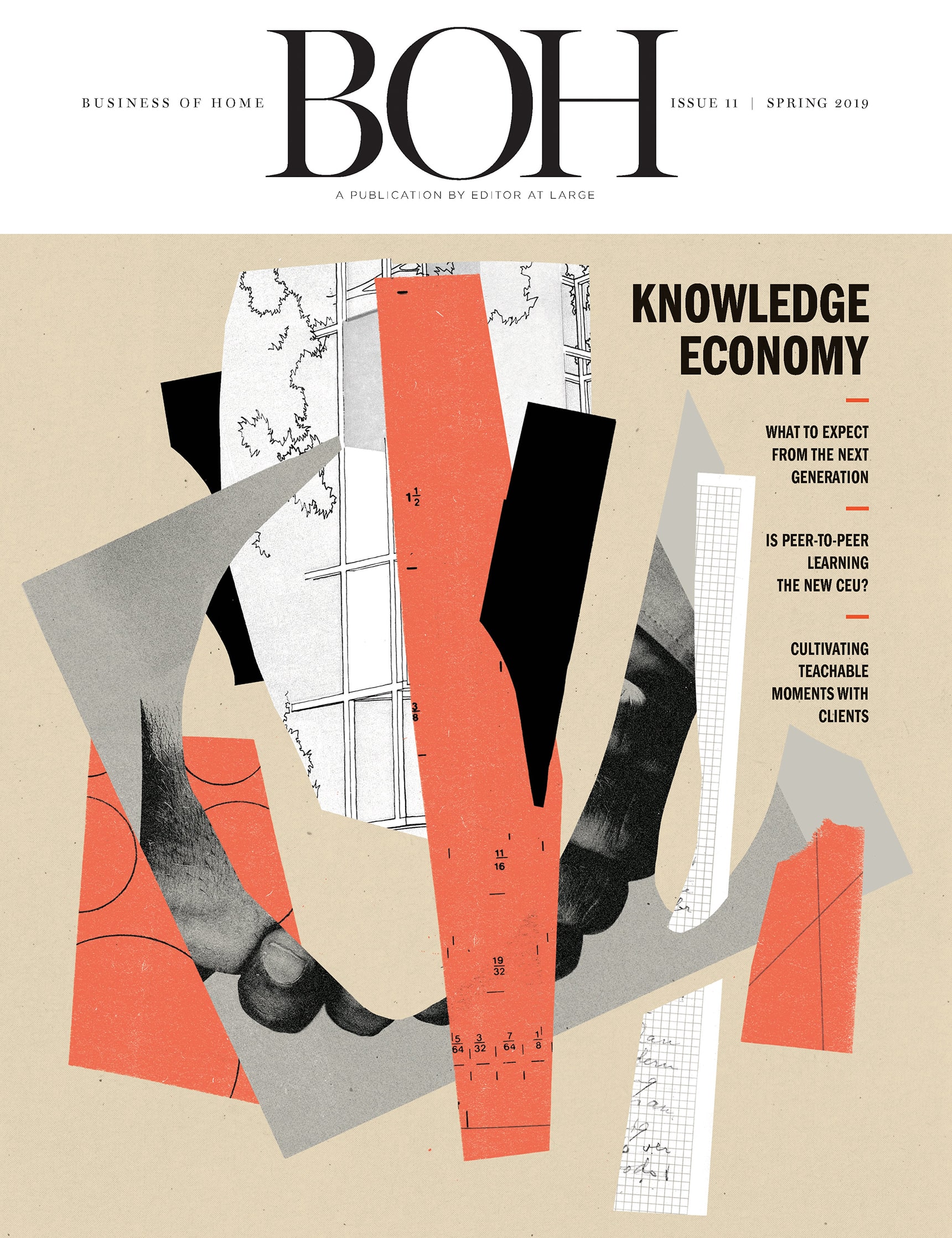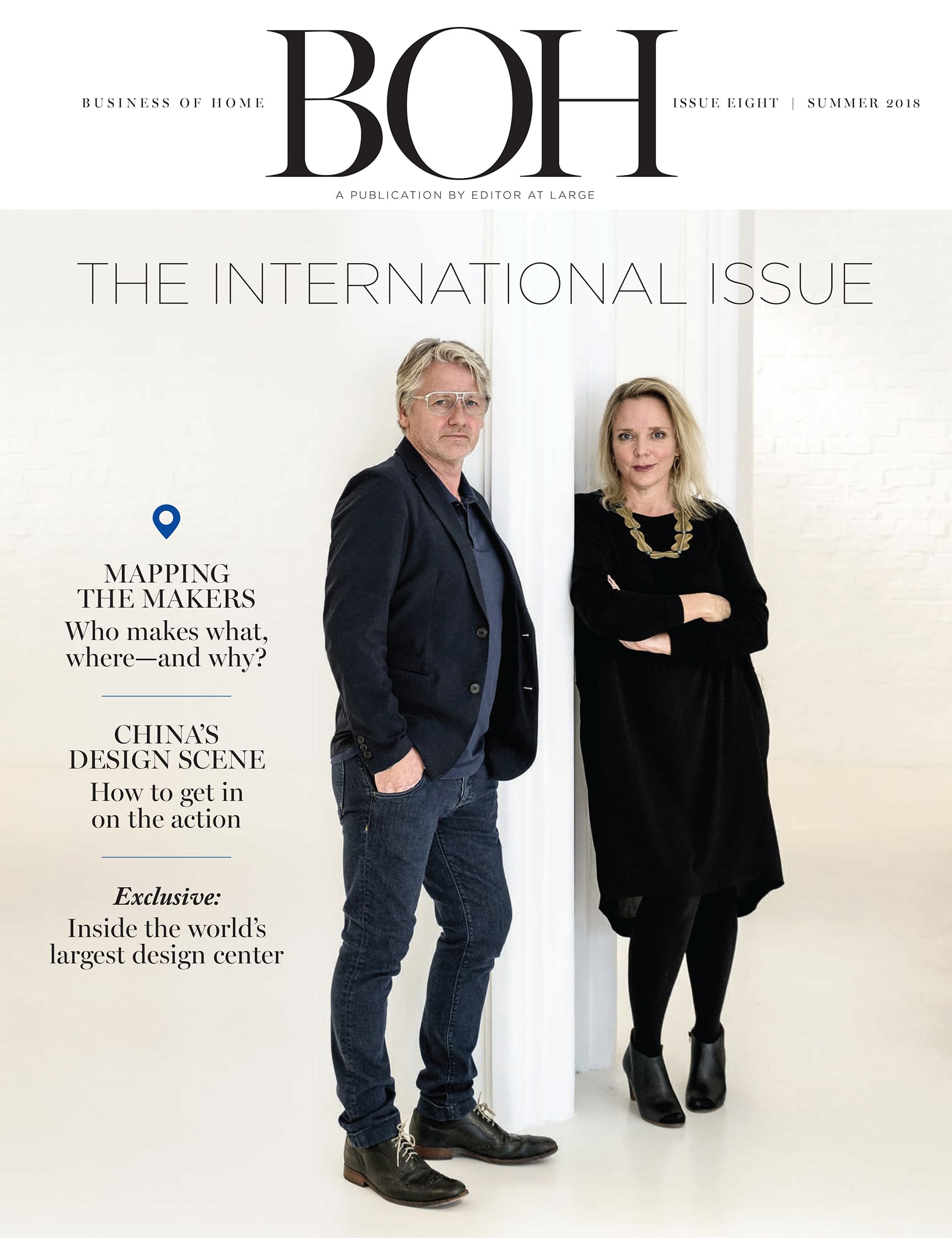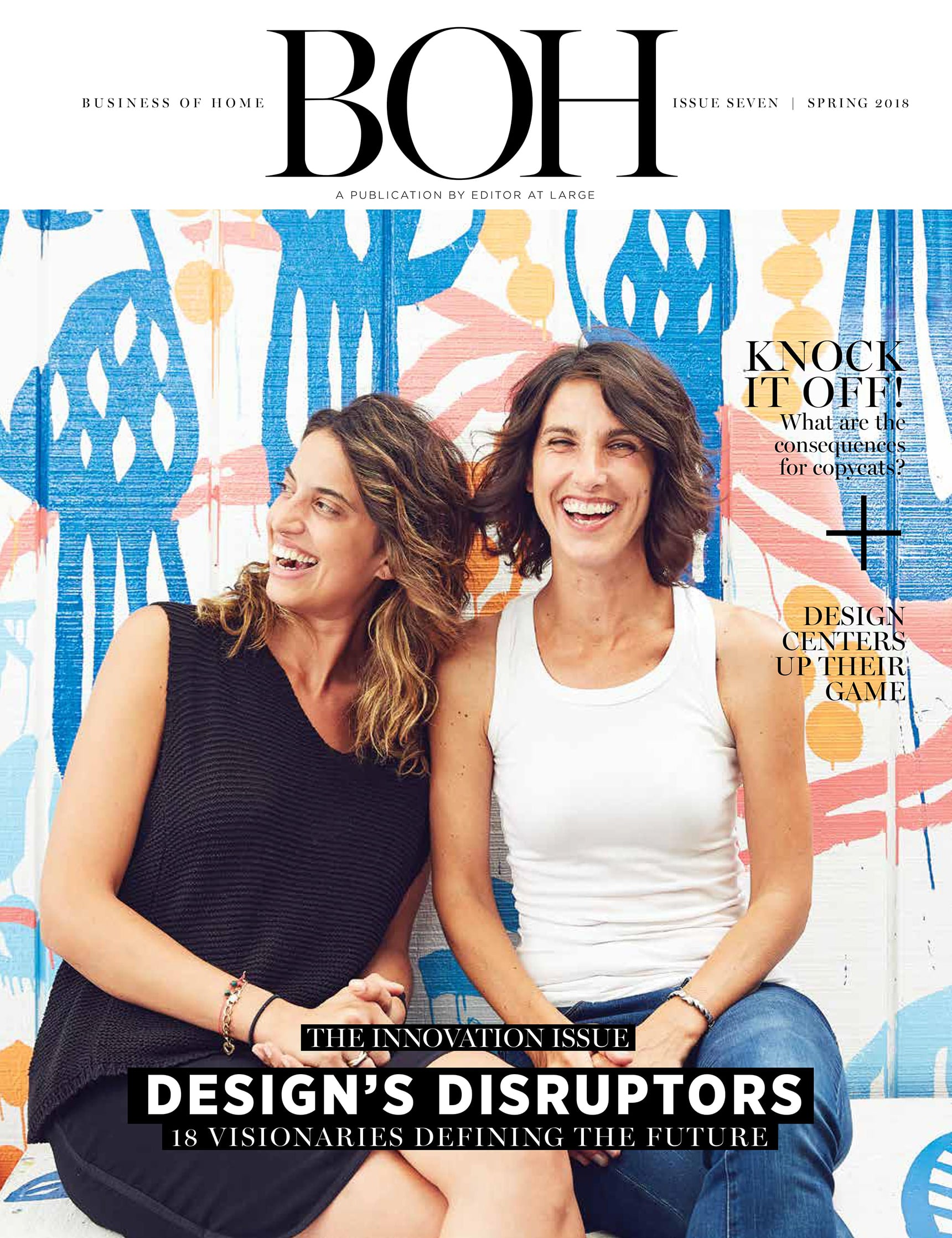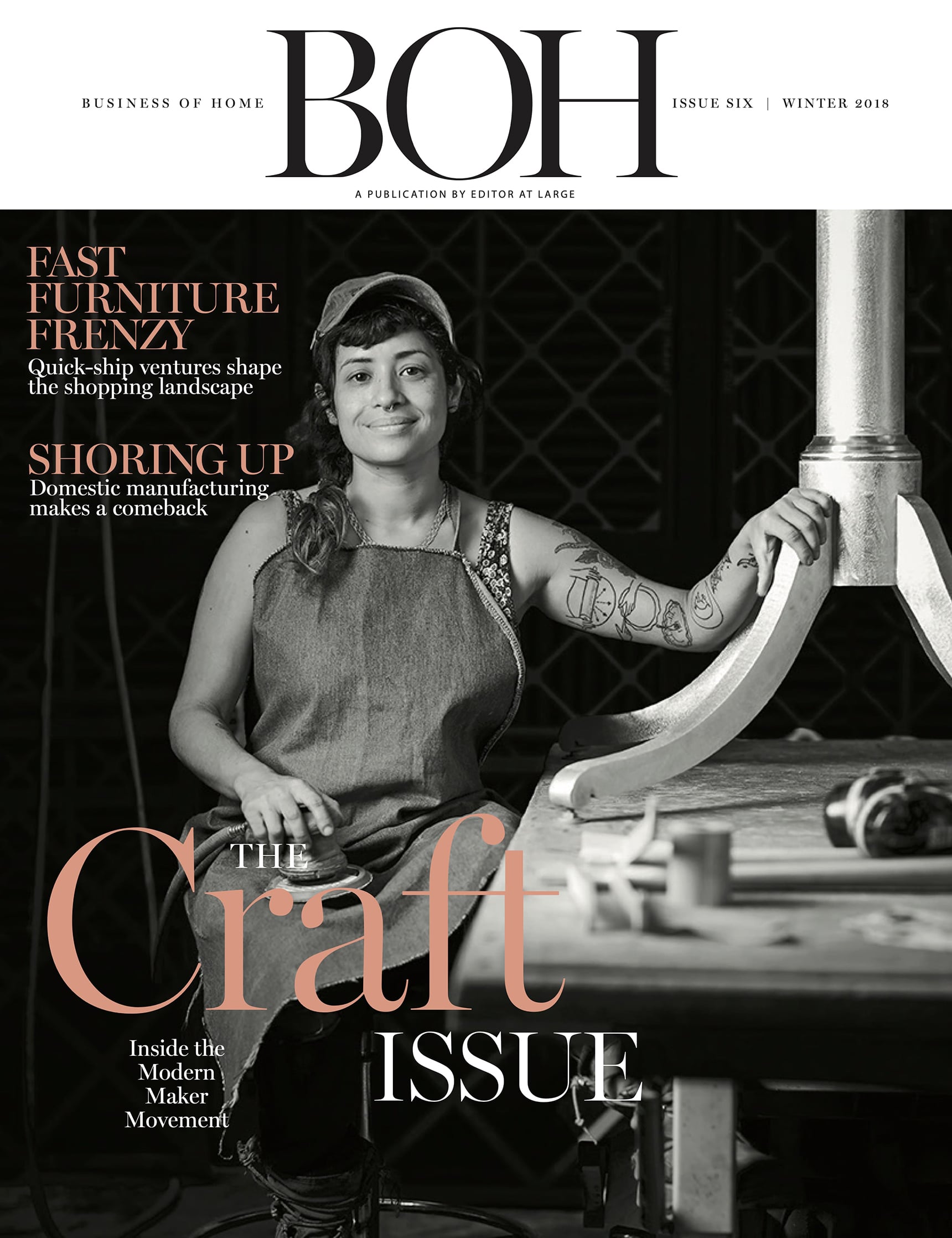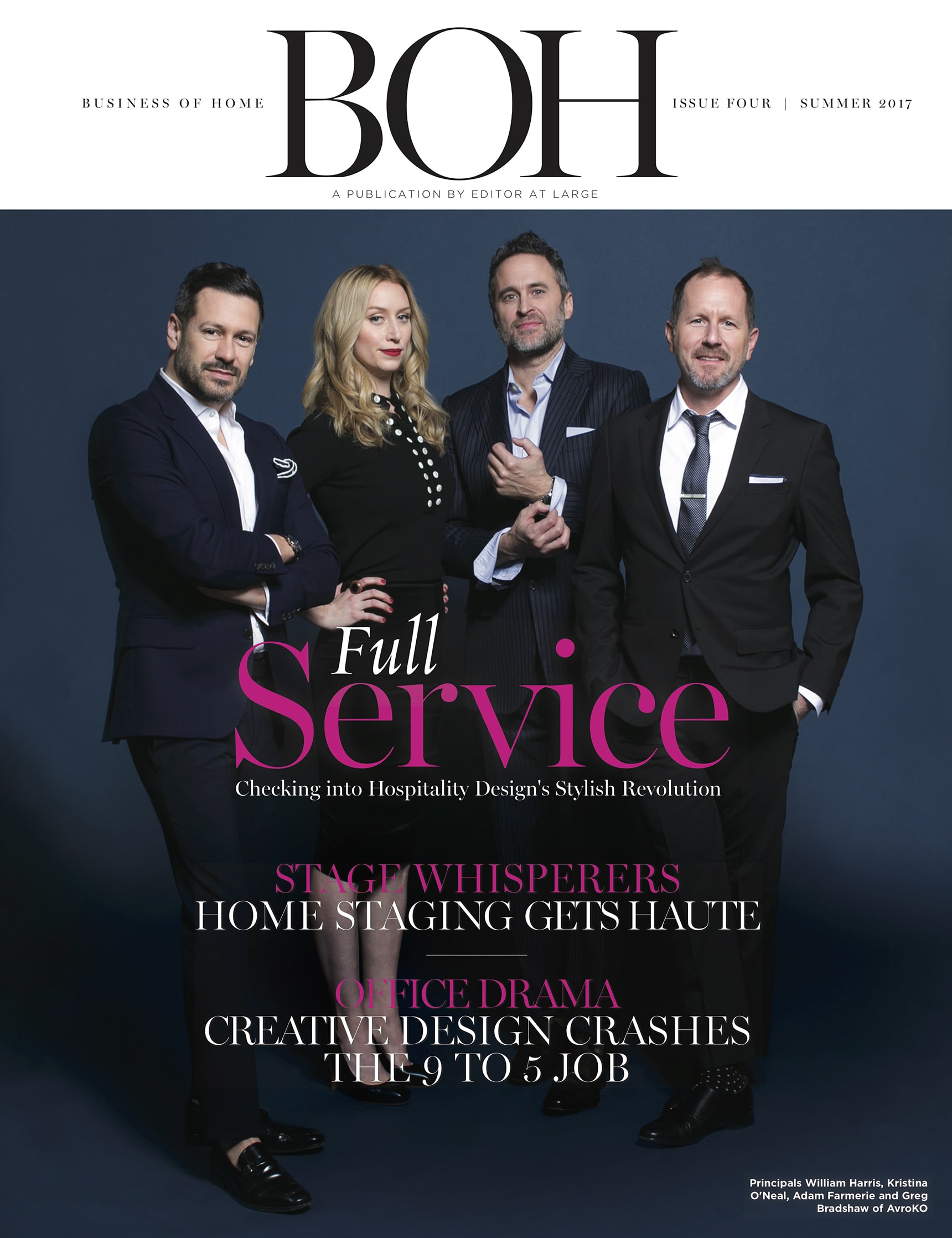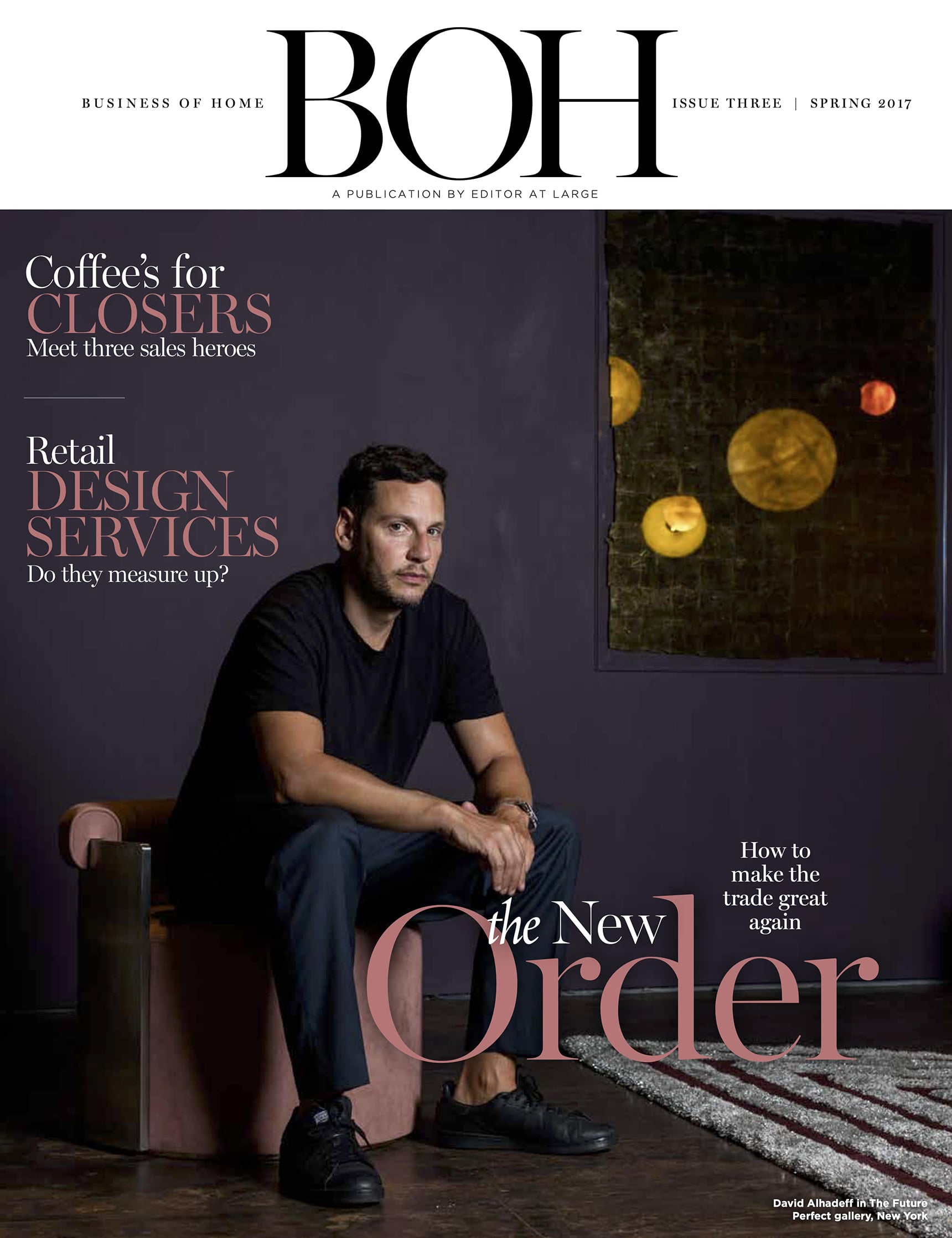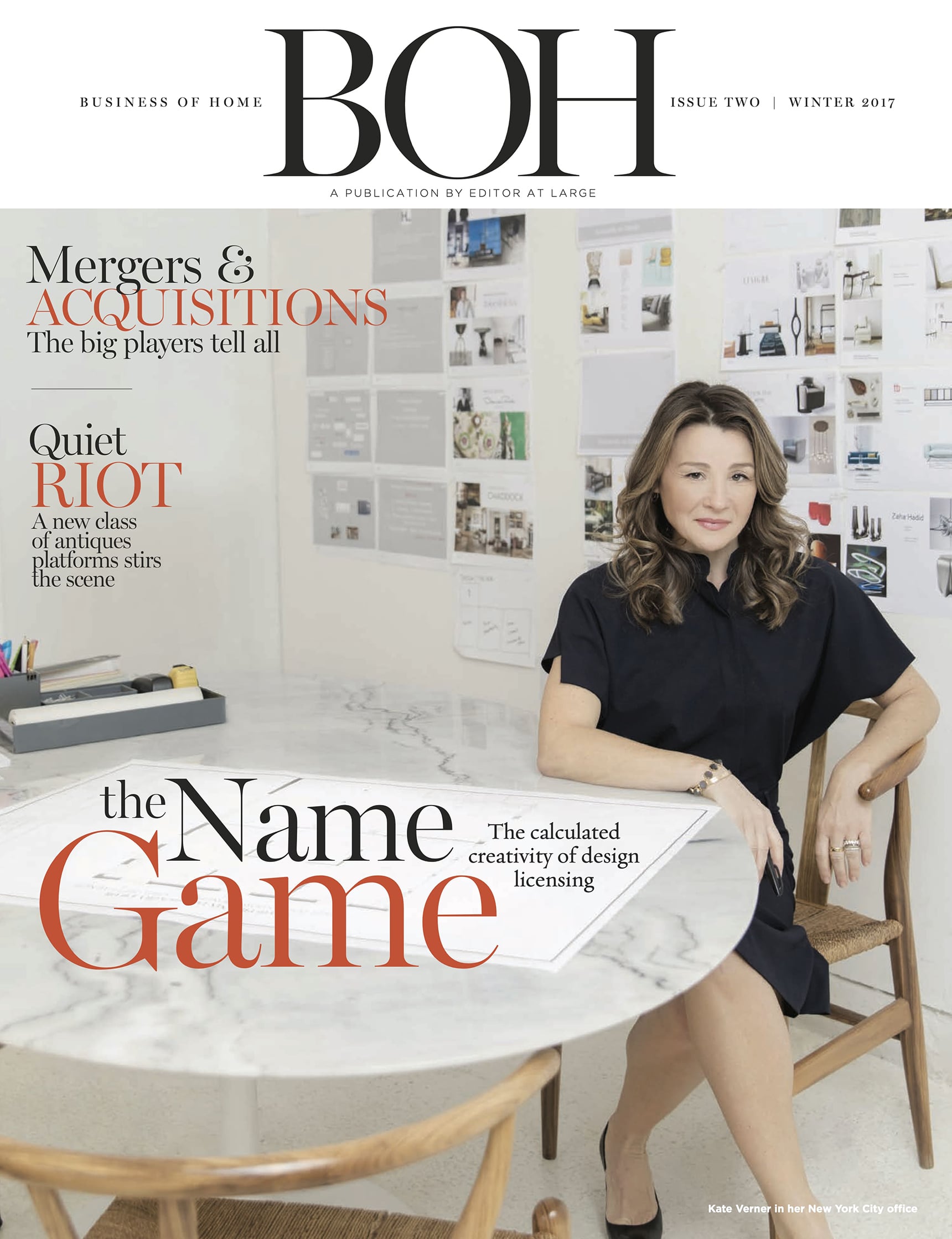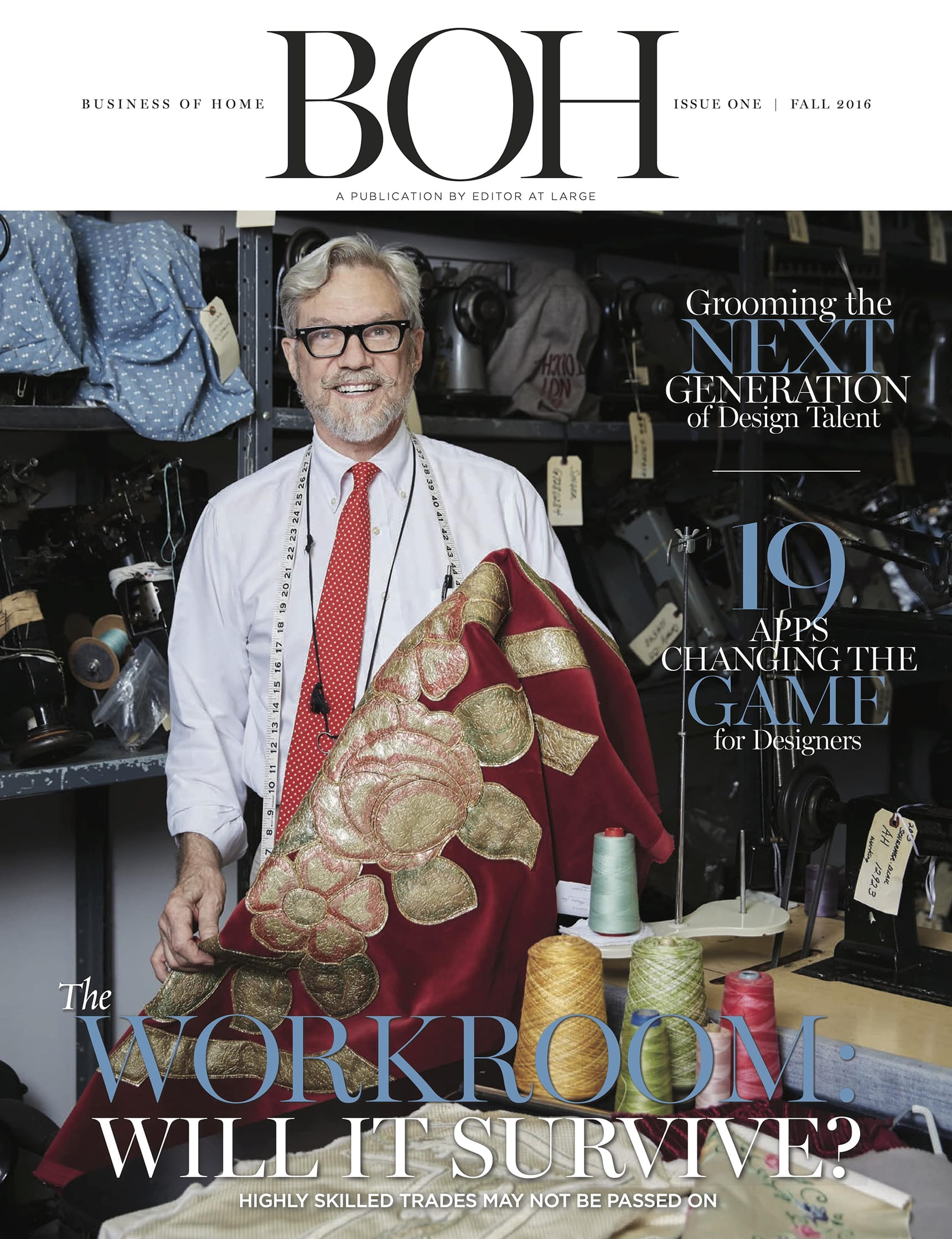After years of hustling to grow her business, Rachel Nelson realized she needed to make a change. The Detroit-based designer got serious about her own professional reset with the help of a coach—then tapped that same coach to work with her team. The goal? A work environment that puts mental health first.
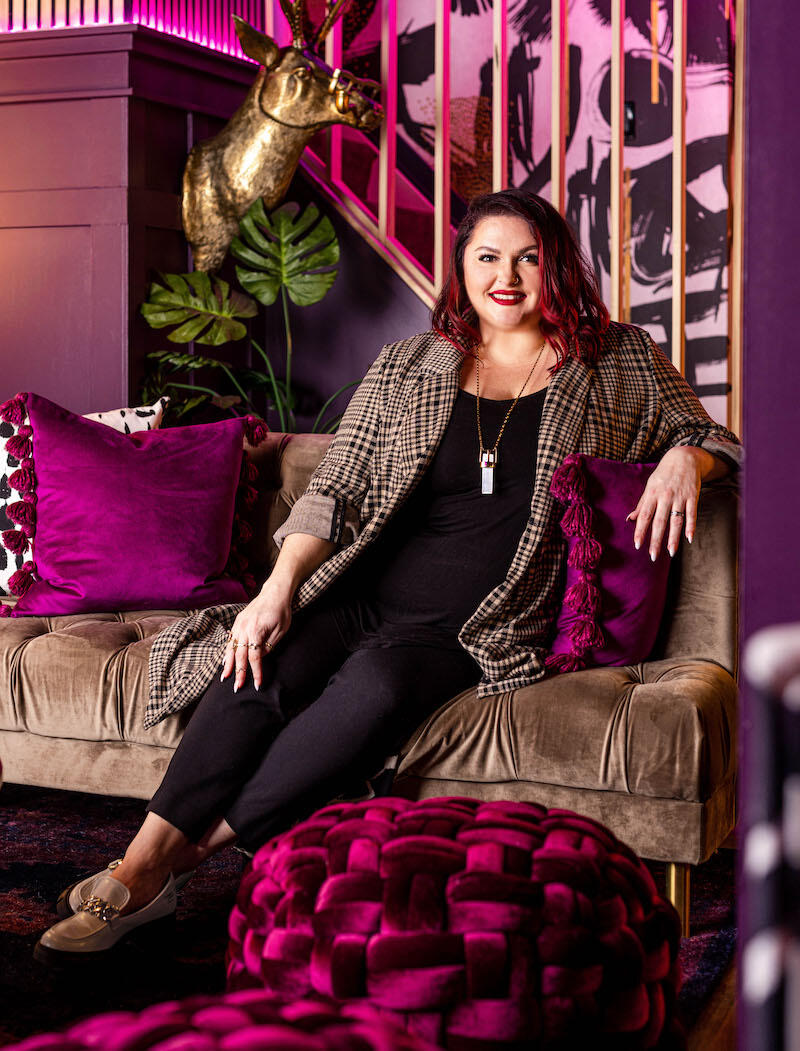
What made you want to prioritize your team’s mental health?
Not to toot my own horn, but I am a high achiever. I want to be challenged. Before I founded Concetti eight years ago, I was part of work cultures that looked at people like me and said, “This one works hard. Let’s rope her in.” Suddenly you’re working evenings, then weekends, and not ever getting a break or being compensated for your time. I’ve been in those environments, and you burn out and it creates resentment.
It takes a lot of gumption to start your own business, and I was in a hustle mentality for a long time to make sure that this company got up and running. I attended an event with a networking group for women entrepreneurs—it was a panel discussion about your nervous system and taking care of yourself, and as I listened, I had tears streaming down my face. I realized, “This is me. I’ve been neglecting this part of myself.”
After the presentation, I made eye contact with Samantha Schmuck—she was one of the founders of this organization, but she’s also a holistic life coach—and we made a beeline for each other. I’d only met her once and I didn’t really know her, but she hugged me while I cried. “I need help,” I told her. And she was like, “We can do this.” I’m proud of the fact that I can put my blinders on and hustle, but we’re not meant to live like that.
How did that relationship change your approach?
When I started working with Samantha in 2019, I still had subcontractors on my team instead of employees. In January 2020, I offered all my subcontractors employment. Then the pandemic hit. We were working from home, and my employees were saying, “I’m having trouble separating work from home life.” Everyone was stressed.
That’s when I started talking to Sam about working with the whole team too—talking about stress management and tools to separate work from life, and opening up dialogue around how we show up as a team and how we want to treat each other. We started meeting on a monthly basis, and created our team agreements, which is our promise to each other. It was a lot of change and a lot of work. But it was worth it.
In this field, there is a lot of high energy. You’ve got to act quickly, and you can burn out. One of the team members said it felt like we’re running a marathon forever. I knew I wasn’t alone—I was talking to other interior designers and they were saying, “Gosh, this is hard. I’m tired. My staff is tired.” One day after talking to my team about it, I just decided: We’re having quarterly mental health breaks, and they’re paid. Done.
How does that work?
In the first and the third quarters, they get Thursday and Friday off, and that Wednesday is a VIP day with Samantha. We also vote on what kind of team-building activity we want—we’ve done candle-making with essential oils and had a tarot card reader come in. It just has to be something that nurtures us and sets the tone for a four-day weekend. Then in the second and fourth quarters, they get a full paid week off in addition to the VIP day. One of my favorite things we’ve done as a team was hire an astrologer who does human design readings, which explores how you’re innately wired and who you are as a person. It was really cool because everybody felt so validated. I’m a [personality type called] “manifesting generator”—most of our designers are—which means we have a ton of energy. We keep going and we fuel energy to those around us. But somebody on our team is a “projector,” which is a totally different way of being. She absorbs all of our energy. When she’s around us, she gets a jolt of energy, but it can also be draining to her. A huge part of being a projector is needing down-time. She had always judged herself—like, “Am I lazy? Why do I need this?” This exercise showed her, “No, you are not. That’s just who you are.” The more we know about ourselves, the more we have permission to be who we are; the more we know about our co-workers, the more we can support them.
Have you felt the difference after investing that time and energy in team connection?
It really changed the team’s morale. I was surprised in a good way by the feedback. The team was saying, “When everybody’s off, we all really log off.” I realized that before, we’d all been still checking our email or Slack channels and trying to stay up to date when we were on vacation. But now, when we’re not working, we all really unplug. I think so many of us feel guilty for taking time off. Now, we [give ourselves] permission to slow down and fill our cup without guilt or judgment, and then people come back refreshed. When we do that, we’re the best version of ourselves. And when we come together as the best versions of ourselves, we’re really there to take care of our team, and therefore our clients.
How has that mindset impacted your approach to more day-to-day business decisions?
Another thing we came up with are focus weeks, which are the last week of every month. We don’t take any client appointments that week, which allows us to have more heads-down time. The client work continues—the designers have deliverables they’re working on—but not having any meetings frees up my time to dive into operations, financials, our marketing plan and strategy, and to do invoices.
One of my pain points was all of those tasks that need to get done on a monthly basis. If I’m still meeting with clients—because I’m a designer and the CEO—then I’m working 60-hour-plus weeks, which is not healthy. I didn’t want my team to burn out, but I wasn’t walking the walk. At one point, one of my employees said to me, “When I see you struggling, I want to step in. I don’t want to leave you over there treading water, I want to come help”—even though that means that she has to come tread with me. I heard that and realized I didn’t want that for my team. Now I’m really taking that time every month to make sure that I have the headspace to keep the business healthy.
You recently hired two employees. As you grow your team, how do make sure you remain just as focused on company culture?
A lot of culture comes down to two things: operations and expectations. As our team grows and clear departments form, we’re talking about what that interdepartmental communication looks like as you’re passing the torch from one area to the other. If operations are sloppy, confusing or chaotic, that’s not a very fun environment. On the expectations side, one of our team agreements is owning how you show up and the energy that you put out. If you’re stressed, don’t project that on to others—that type of thing. Also, always assuming that the other person has good intentions. If something ruffles your feathers, don’t assume it’s malicious, because that’s not acceptable here, and set about solving what is probably an innocent misunderstanding.
I have learned that no matter how qualified a candidate is, you have to hire people who value these same things. As much as you can see the potential in someone, if they’re not open to all this—if they’re not going to be truthful or self-aware—then it’s not going to work. Today, the first interview includes Sam, and it’s very clear: This is our wellness coach, who helps pull us together as a team and be self-reflective. A lot of our questions during the first interview are about company culture. Then, if that feels good, I go into their actual qualifications—but I won’t go further unless we’re on the same page that this person is going to add to the culture.
When a new employee starts, they work one-on-one with Sam to help establish their workflow and to adapt to block scheduling. She’s there to offer stress management and, if needed, emotional support—people can open up as much or as little as they want to, and it’s not reported back to me. She just holds space for people because a new job is exciting, but it’s also a big change.
I don’t mean to be cynical, but having a coach on call sounds very expensive. How do you think about those costs?
You know what’s more expensive? Turnover. That’s what costs companies the most. I’m not an instant gratification person—I will put in the time to build a strong foundation, and I want to do it right, knowing that eventually things will be what they need to be. When I started doing this [work and implementing these systems with Sam], a couple of team members looked at me like I had 10 heads, and eventually both of them left on their own. It will weed people out.
It comes down to standing in your truth and being your authentic self. The empathy piece of this goes against the traditional idea of what being a boss is supposed to be. But as cheesy as it sounds, when you are boldly radiating who you are, the right people will come. It is hard to do—it doesn’t come easily and it takes a minute to get it right—but it’s important to take steps toward your truth even when the outside world hasn’t caught up yet.
It is an investment, but I definitely believe that the benefits pay off tenfold, because if you have retention, you have happy people, and if you have happy people, you usually have happy clients. You spend so much time at work, so let’s make it an environment that is going to positively impact who you are and how you show up in life, not suck you dry.
Homepage image: In a bold basement lounge that needed to provide space for entertaining, exercise and rest, Rachel Nelson deployed lush berry tones, playful patterns and brass accents that glimmer in the low lighting as a backdrop for both relaxation and rejuvenation | Brett Mountain Photography





